
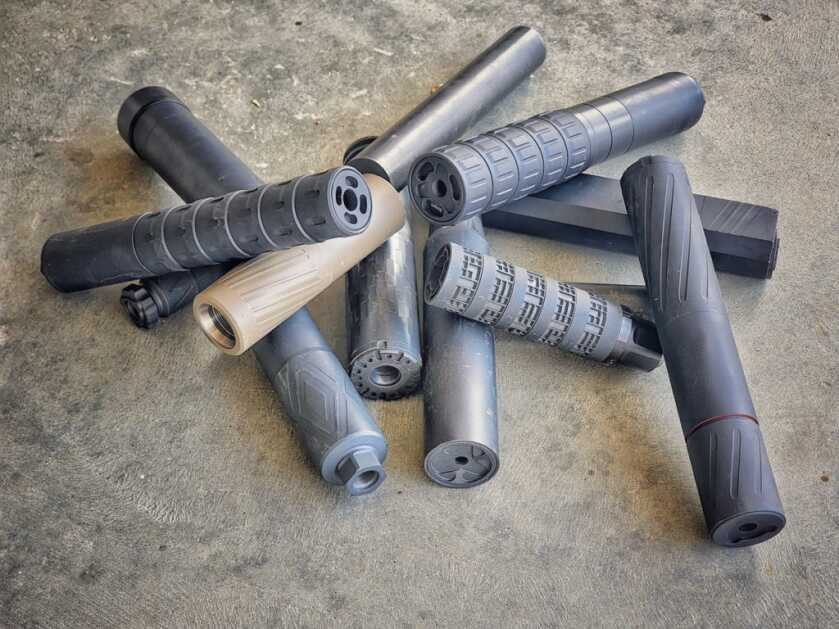
Unlike a traditional firearm, it’s difficult to recoup all of your money from a suppressor should you ever decide to sell it. If you sell, you immediately lose the $200 that you paid in the stamp tax to the ATF. It also takes a really long time to get through the purchasing process for a silencer should you choose one incorrectly.

Before you go lay your hard-earned money down for a suppressor, you should spend some time thinking about how you’ll use your suppressor. The way you use your suppressor should determine the features you’ll shop for in a suppressor. The features you decide are most important should be the determining factors in what suppressor you purchase.
What are the features that you should consider when buying a suppressor?
Caliber – Diameter of bullet that will fit through the baffles and endcap or that the suppressor is rated up to. Caliber is an important factor because it ultimately determines what caliber or bullet diameter size you can fire through the suppressor. If you buy a 9mm pistol suppressor, it won’t work on a 45 ACP. However, if you buy a 45 ACP pistol suppressor it will work on a 9mm, 40 S&W, 30 Super Carry, and any other caliber with a bullet diameter less than .454 caliber.
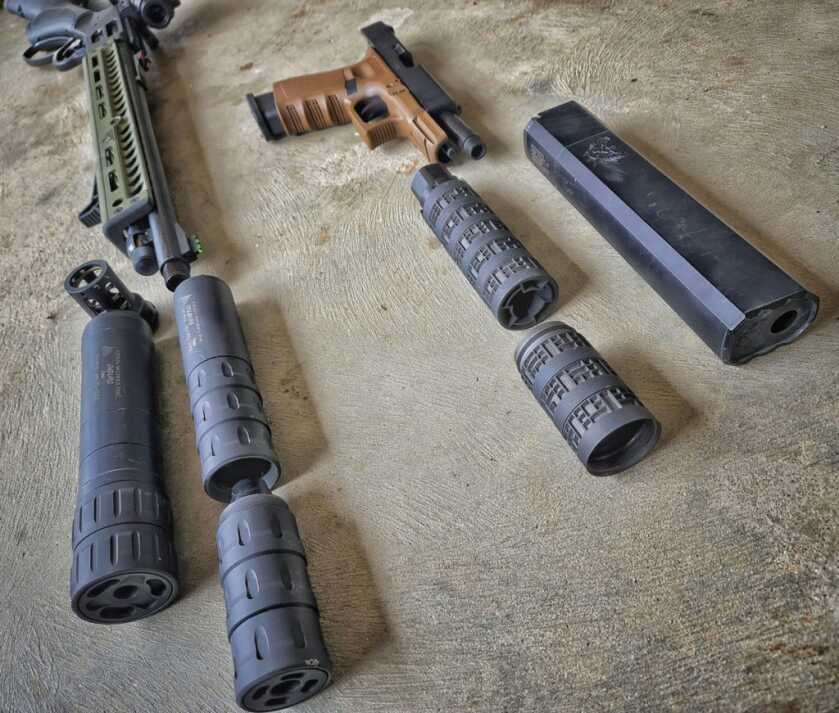
However, the 45 ACP suppressor will generally be larger, heavier, and longer, and it won’t be as quiet on smaller calibers like 9mm when compared to a dedicated 9mm suppressor.
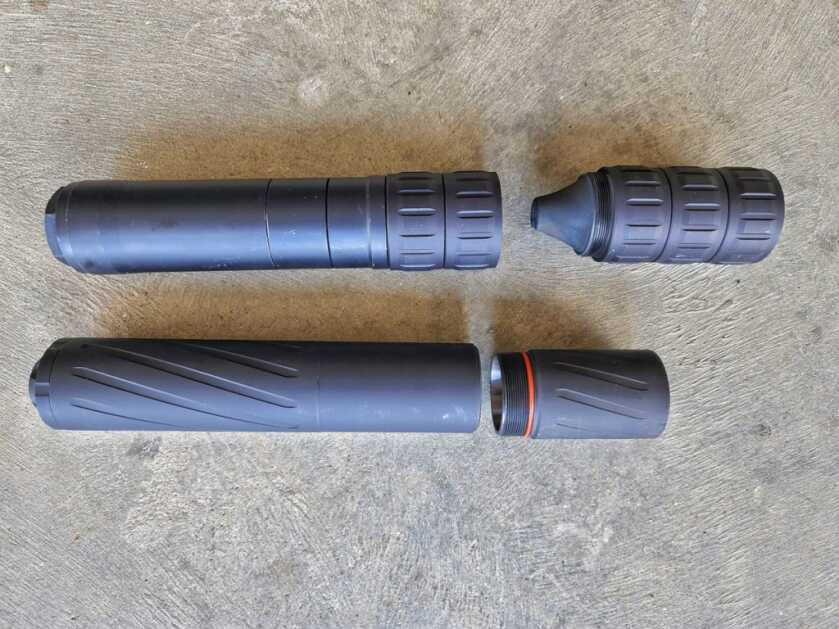
For rifles, the same logic applies. If you buy a suppressor rated for 300 Win Mag, you can usually use it on your AR15 in 223/556, your 6.5 Creedmoor, your 308 Win, 7mm Mag, etc.
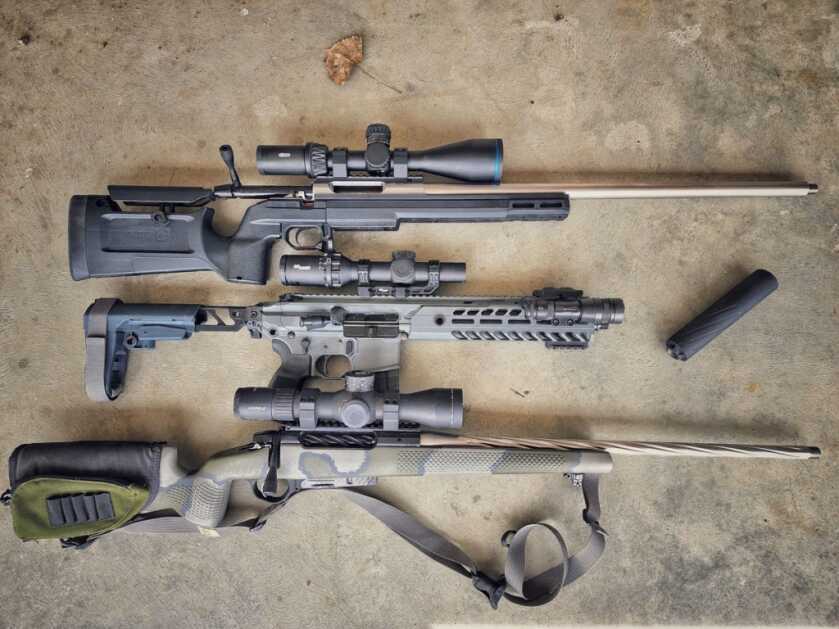
If you buy a dedicated 223/556 suppressor, you can’t use it on anything bigger. The dedicated 223/556 suppressor will likely be shorter and lighter and will probably be quieter on a 223/556 platform than a 300 Win Mag suppressor on a 223.

Size – It can matter. We’re talking about length and diameter. If it’s too long it may be unwieldy, won’t fit in a case, scabbard, or safe. If the diameter is too thick, it could obscure sight pictures, flashlights/lasers, may not fit in a holster or under the handguard, etc.
Suppressors Delivered to Your Door
One call, does it all. Select your suppressor, create your trust, fit your gun, deliver to your doorstep. Silencer Central – Simple, Smart, Easy! Call 866-693-3982 or visit https://www.silencercentral.com/about-us/
Weight – Literally how much the suppressor weighs. It’s on the very end of your barrel and it can make a big difference in how the rifle feels. You’ll see a greater zero shift between suppressed and unsuppressed with a heavier suppressor. Heavy suppressors can make guns feel muzzle heavy and not balanced when slung up on your shoulder.

Full Auto Rated – If you are going to put it on a full-auto firearm, don’t buy a suppressor that isn’t full-auto rated. If you are planning on doing mag dumps with semi-auto, get a full auto-rated suppressor.
What is it made out of? – Suppressors are made from aluminum, titanium, stainless steel, 3D printed metals, plastics, carbon fiber, Inconel, and other metals. Those all have positives and negatives. Generally, dedicated pistol suppressors are aluminum and lighter than rifle suppressors. Generally, you can’t fire rifle calibers or rounds through pistol-specific suppressors due to the rifle’s excessive pressure that they’re not designed to handle. There can be exceptions but you should do your homework.
Nielsen device – Sometimes called a booster. These are only for pistols. Generally, rifle-specific suppressors don’t work on pistols because most pistols require a Nielsen device or a booster to increase recoil so the pistol will function. To work on most pistols, it should come with a booster or have the ability to add it.
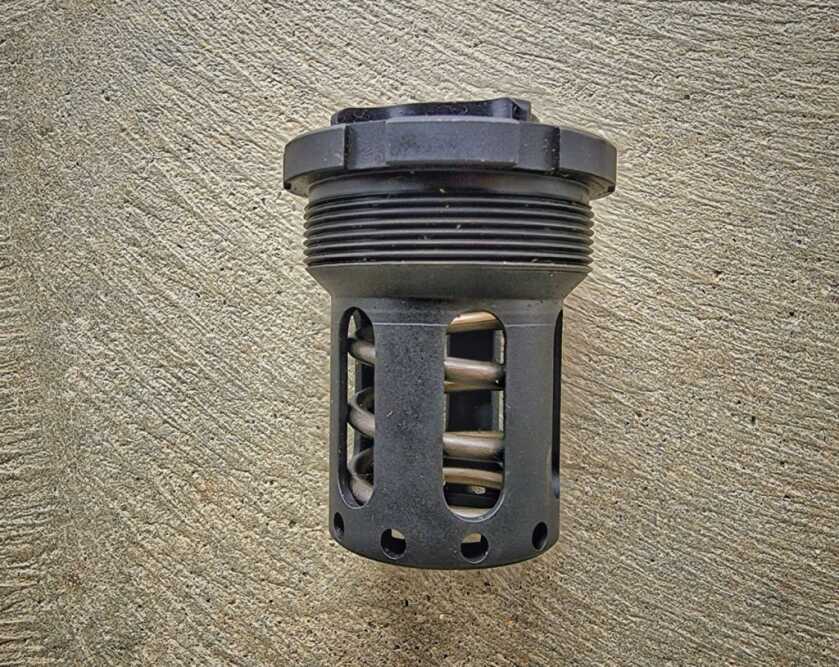
Quick detach – This is an option that many rifle suppressors come with. It usually requires you to buy a specific muzzle brake or flash hider that attaches to the suppressor.
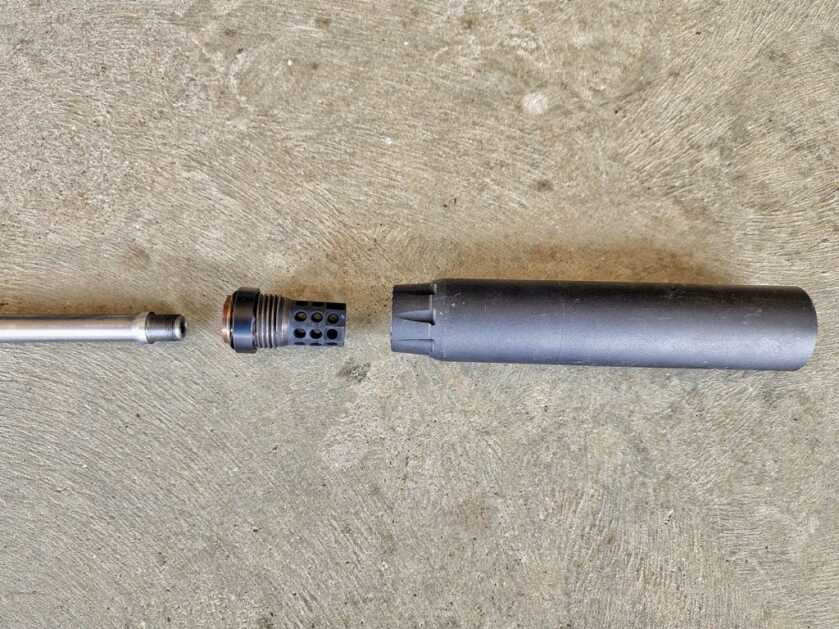

Decibel reduction – Some manufacturers will publish dB numbers. They can give you a rough way to compare. The problem is that ammo, caliber, barrel length, action type, atmosphere, and other factors can all affect the published decibel levels. 140 dB or less at the shooter’s ear is considered hearing safe. The general rule is that every 3 decibels is a doubling or 100% greater sound intensity. An unsuppressed .308 at the muzzle is generally between 160-170 dB. Suppressed, anything below 140 is safe.
Minimum barrel length ratings – Many manufacturers will tell you in their specs that the suppressor is rated for up to a certain caliber, and they’ll include the minimum barrel length. If you go below that barrel length it could void your warranty or cause unsafe conditions.
Backpressure – Law enforcement and the military are all over this right now. Some suppressors create a lot of backpressure in the firearm. It’s not a big deal on a bolt action but on a semi-auto, it matters. Backpressure will cause toxic gases and small particles to blow back in the shooter’s eyes and face. Excessive back pressure can even cause malfunctions. Some backpressure is needed for subsonic calibers like 300 Blackout to function in semiautos.
Warranty – This is how the company will handle a problem. Don’t buy from a company that might not be around in two years. Should you have a problem like a baffle strike, you’ll need to send your suppressor to the manufacturer to have them fix it. Know ahead of time that you’ll be happy with that process and the turnaround time.
Ability to clean for rimfire – If you are going to be using it on a rimfire you should buy a dedicated rimfire suppressor. As a general rule, you should never shoot rimfire through a centerfire suppressor. They will fill up with lead and carbon and you can’t ever get it out. Dedicated rimfire suppressors are designed so that you can get them apart and clean them even when they’re full of lead and carbon.
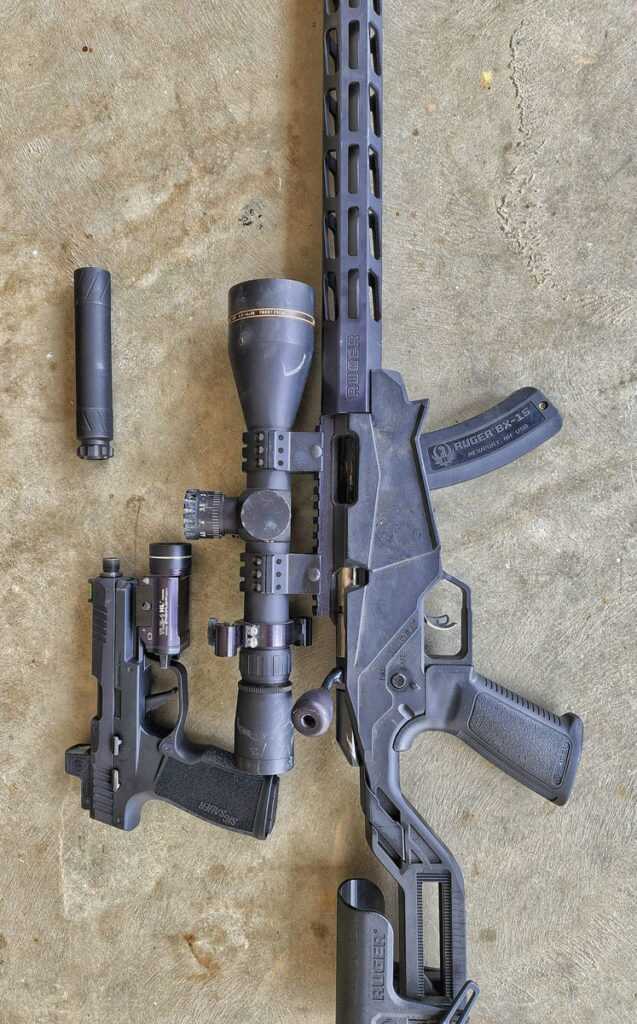
Price & Availability – Figure out your budget and then add $200 for the ATF tax. Usually, titanium suppressors cost substantially more than stainless or aluminum suppressors and may not be worth the extra money if you’re only carrying the gun from the truck to the shooting line. Availability is another issue. If the manufacturer doesn’t have it in stock, you can’t buy it. There are some manufacturers that are back-ordered a year on certain models of suppressors. I wouldn’t wait. Find something else with similar features.
Multi-caliber Suppressors – There is a new breed of suppressors that will work on almost any centerfire firearm. Silencer Central’s new Banish 46 will work on both pistols and rifles up to 46 caliber. So it will handle 338 Lapua, 45-70, and work all the way down to 223/556. It will also work on all pistol calibers up to 46 and it comes with a booster that can be configured so that handguns will function when it’s attached. It’s probably not going to be the best at all of those calibers, but it should be hearing safe on any of them. There are negatives like weight and size (it’s kind of big), but it’s possible to own one suppressor that could do everything.

Hunting – If I were purchasing a suppressor for hunting, I would consider caliber, size, and weight above all else. For hunting, I personally want the shortest, lightest suppressor I can buy. I’m going to carry it for hundreds of miles and only shoot it once or twice a season. I want it hearing safe but being the quietest suppressor on the market isn’t at all important to me. I personally would only consider suppressors that weigh 13 oz or less for hunting and certainly no longer than 6 inches. Lighter and shorter would be better. The BANISH 30 in its smaller configuration is certainly a viable option for hunting and it would work pretty well for precision stuff in the longer config. If you were sitting in a tree stand then size and weight may not matter at all.
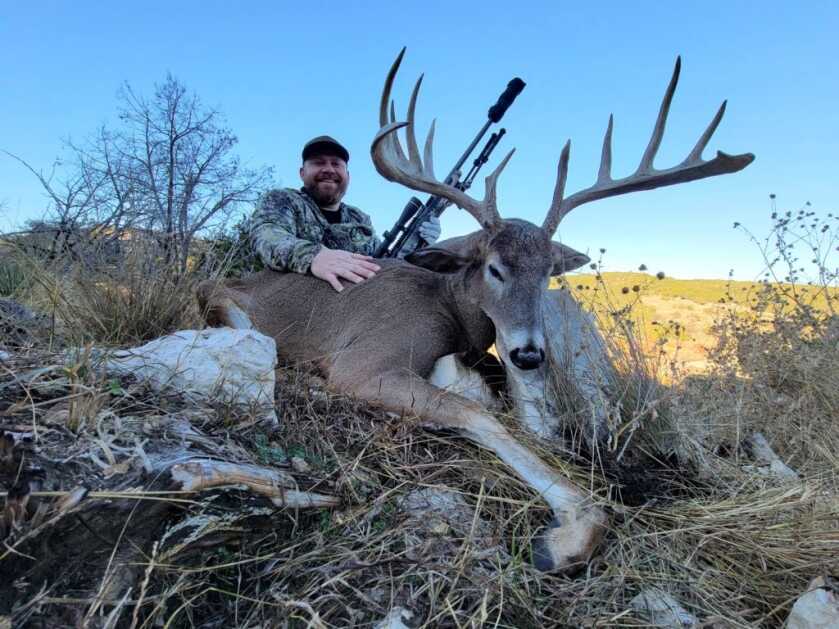

Range Suppressor – If I were going to put a suppressor on a gun that only ever got carried from the safe to the truck to the range, I wouldn’t care how big or how heavy it was at all. I would want it to be less expensive, reduce sound at a maximum level, and I don’t care if it weighs 18 ounces and is 9 inches long.
Shotgun suppressor – If you want to suppress a shotgun then you need to buy a dedicated shotgun suppressor.
Hidden Fees – Some suppressors don’t include the adapters you need to attach to your firearm. Those will cost you extra. Some companies don’t include muzzle brakes or flash hiders for their QD suppressors and will charge you another $125 for those items. Many of them do however include these items in the price of the suppressor. Check on this before buying. I was pleasantly surprised to see that Odin includes a muzzle device with the suppressor when you buy their QD.
Conclusion – As you can see, there is a lot to think about before purchasing your first suppressor. Almost all the features you consider are somehow a trade-off for something else. Generally speaking, the quietest suppressors are larger and have more volume inside them. That’s a tradeoff for length and weight. The shortest, lightest suppressors aren’t usually as quiet. The ones that do everything pretty well are usually more expensive. Do your homework!
Interested in getting a suppressor? Check out GunsAmerica’s Suppressor Academy.

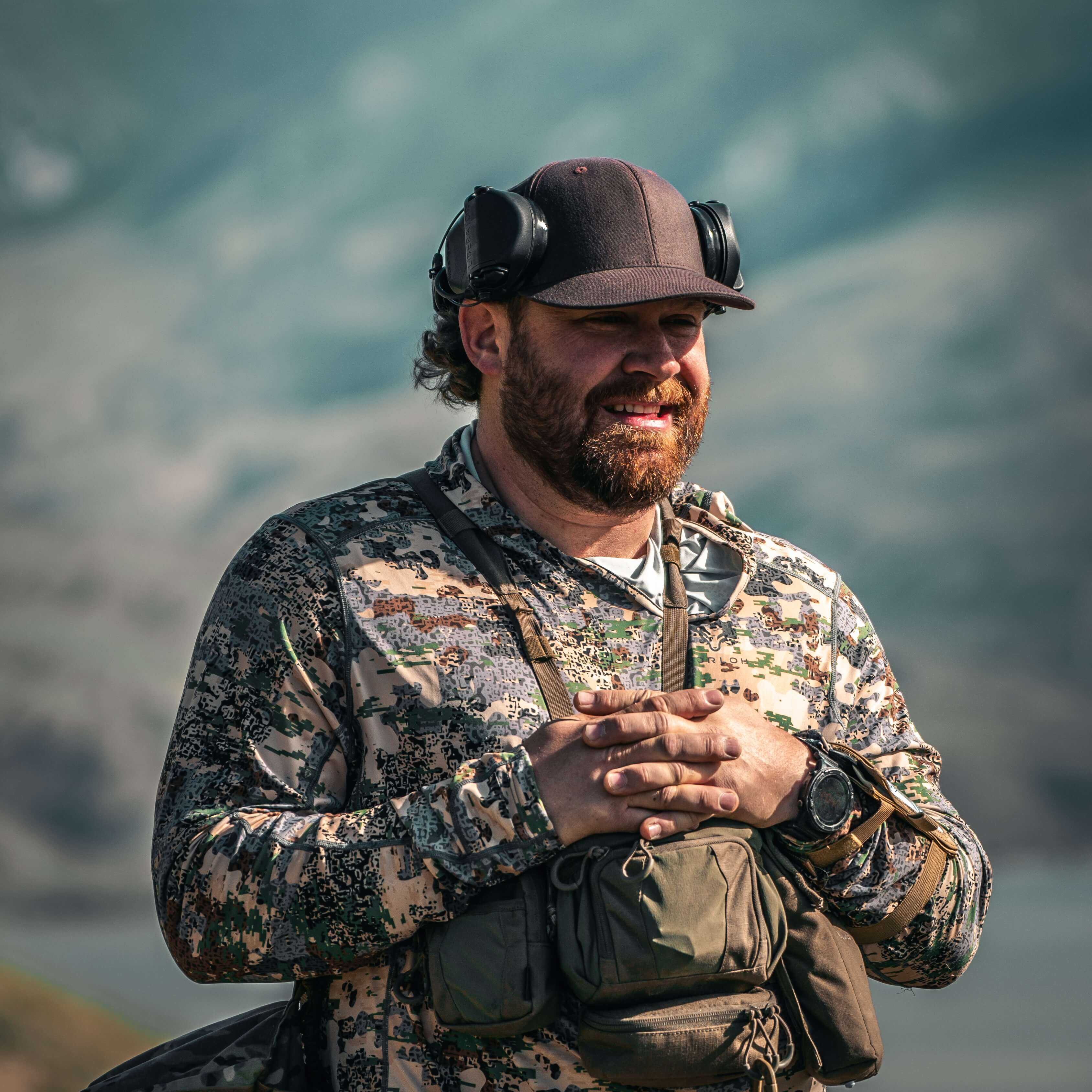
INTERESTING THINGS: GUNS AND GUN PRODUCTS
looking or a suppressor for a 9mm scorpion
nice read will look into a banish 30 for my creedmore 6.5
Your description of the Nielsen Device is incorrect. It does not “boost recoil”, it allows the barrel and the suppressor combination to flex. The device is only needed in handguns that require the barrel to move in order to cycle, i.e. 1911, B-92, etc. They are not required for fixed-barrel weapons.
Monocore or cups. Which is better for pistol ammo?
Wow. I work for a (moderator) suppressor company in the Uk and no Uk shooters would purchase any of the US suppressors based on this article. 99% of UK suppressor’s are very light weight and majority mount with 75% of the overall length over the barrel giving a better balanced rifle. Most Uk shooters want optimum noise reduction as there is no limit when hunting some guys taking in excess of ten deer in a session
The insanity of US gun laws is different from the insanity of UK gun laws.
Your claim that larger caliber cans on smaller calibers isn’t as effective is not necessarily correct. Like a 30 cal can on a 5.56 (.223).
It’s been my experience that the larger cans can silence a smaller caliber better than the smaller can. Even with the larger caliber endcap.
Look at the Silencerco Saker .30 cal. It is quieter with .5.56 than the actual 5.56 Saker. The endcap size makes no significant difference. (Putting a 5.56 cal endcap on a 30 cal can or 9 on a 45).
The larger the can, usually, the better the sound suppression is.
I have stayed away from Class III items and have not kept up. Years ago when it was mostly unheard of, a friend who was a policeman got both a submachine gun and a suppressor.
The next day, we took it for its initial ride. He had everything in a locked gun box, and he had paperwork in there with it. The paperwork said it had to be carried along with the gun, and it had to be the original, not a copy.
Because of that, I never applied for anything, and I am wondering if that paperwork law has changed.
Great information!! Suppressor Academy did a wonderful job in detailed explanation.
Is there a suppressed solution for both a Scorpion 9mm and a 300 Black out?
I use a YHM Sidewinder, it is a 9 mm suppressor. It is rated for 300 BO subsonic. If you are going to shoot 300 BO supersonic you will need one rated for that. If you get a dedicated 30 caliber suppressor you cannot shoot 9 mm through it.
Excellent review! You touched on all the major factors that I have found through 12 years of owning various suppressors, some “dedicated,” some multi-caliber. Also , look for the multi-caliber models that have replaceable end-caps that help with sound reduction once you go down to the smaller calibers.
I’m looking for a suppressor for a M1 a 308. I’m having a hard time finding what I need for my weapon. For instance a scope mount, It would be nice if you could help me in that department.